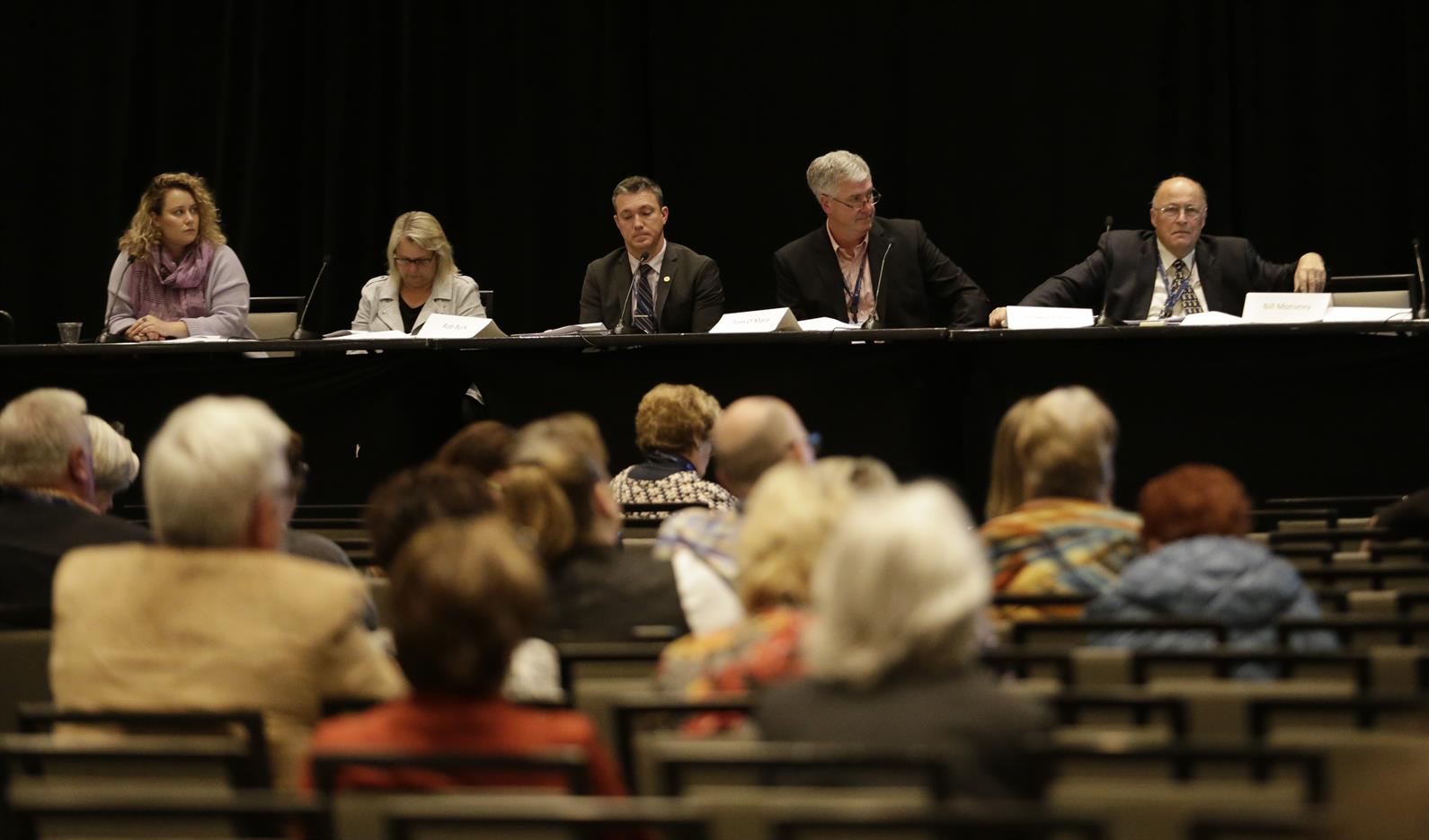
Wednesday’s second annual Competition and Member Summit at US Equestrian’s 2019 Annual Meeting in West Palm Beach, Fla., focused largely on proposed rule changes to Chapter 3 of the Rule Book. The proposed changes comprise phase one of the effort to update Chapter 3, which covers competition licensing.
US Equestrian CEO Bill Moroney moderated the panel discussion, which also included members of US Equestrian’s Competition Calendar Task Force. Those were Rob Burk, CEO of the United States Eventing Association; US Equestrian board member Tom O’Mara; Arabian owner and equestrian organization consultant Howard Pike; and US Equestrian staff members Lisa Owens and Katlynn Sacco. Owens is the Managing Director of Competition and Athlete Services, and Sacco is Director of Competition Licensing, Evaluation, and Safety.
Over the course of two hours, Moroney walked attendees through the series of proposed rule changes for Chapter 3 in detail, and he and panel members answered numerous questions from the audience about a range of topics, such as licensing policies, mileage exemptions, and potential consequences and scenarios that might arise from the proposed changes.
For the full discussion and details on the proposed rul changes, watch the two-part Competition and Member Summit on demand on USEF Network.
“It’s important to keep abreast of what’s changing in the environment and address it as it comes along,” Moroney noted. Among the changes that inspired the effort to reform Chapter 3, Moroney noted, are
• new events and organizers
• consequences that occur after rule changes are implemented
• the effects of international competition on the United States competition calendar
• the creation of hub venues in response to land loss and reduced facility availability
• a shift in some competitors’ migration patterns, which led some to compete more in the winter in warmer climates, which in turn affected competitions in their home territories
• cancellation of competitions that are part of qualifying processes
Calling Chapter 3 “the Holy Grail of competition licensing,” Moroney began by explaining competition calendar management’s overarching goal: to create a calendar that is best for the development of horse and human athletes by providing competitive experiences at all levels. “That’s the goal of appropriate and proper calendar management,” Moroney said. “How do we accomplish the goal? We do it by continually reviewing the effects of what we have in place and the evolving environment on our calendar management tools and adjusting as needed to align our processes to meet our goals.
In its work, the task force considered the following factors:
• the continually evolving competition environment creates challenges and requires continual analysis of all aspects of calendar management
• the developmental and competition needs of athletes, horses, and members
• competition and venue viability and diversity of experiences
• utilizing the appropriate methods to manage the competition calendar
The task force solicited feedback through direct mailing of the proposed Chapter 3 rule changes to all competition organizers and to affiliate leaders; requests for feedback in the Equestrian Weekly digital newsletter; staff attendance at recognized affiliates’ annual meetings and at USEF Competition Management Committee meetings; one-on-one discussions, and more.
All panel discussions on Wednesday, Jan. 9, and Friday, Jan. 11, are streamed live and will be available online on USEF Network. Watch parts one and two of the Competition and Member Summit here.
Want more articles like this delivered to your inbox every week? Sign up here to receive our free Equestrian Weekly newsletter.
This article is original content produced by US Equestrian and may only be shared via social media. It is not to be repurposed or used on any other website aside from USequestrian.org.


